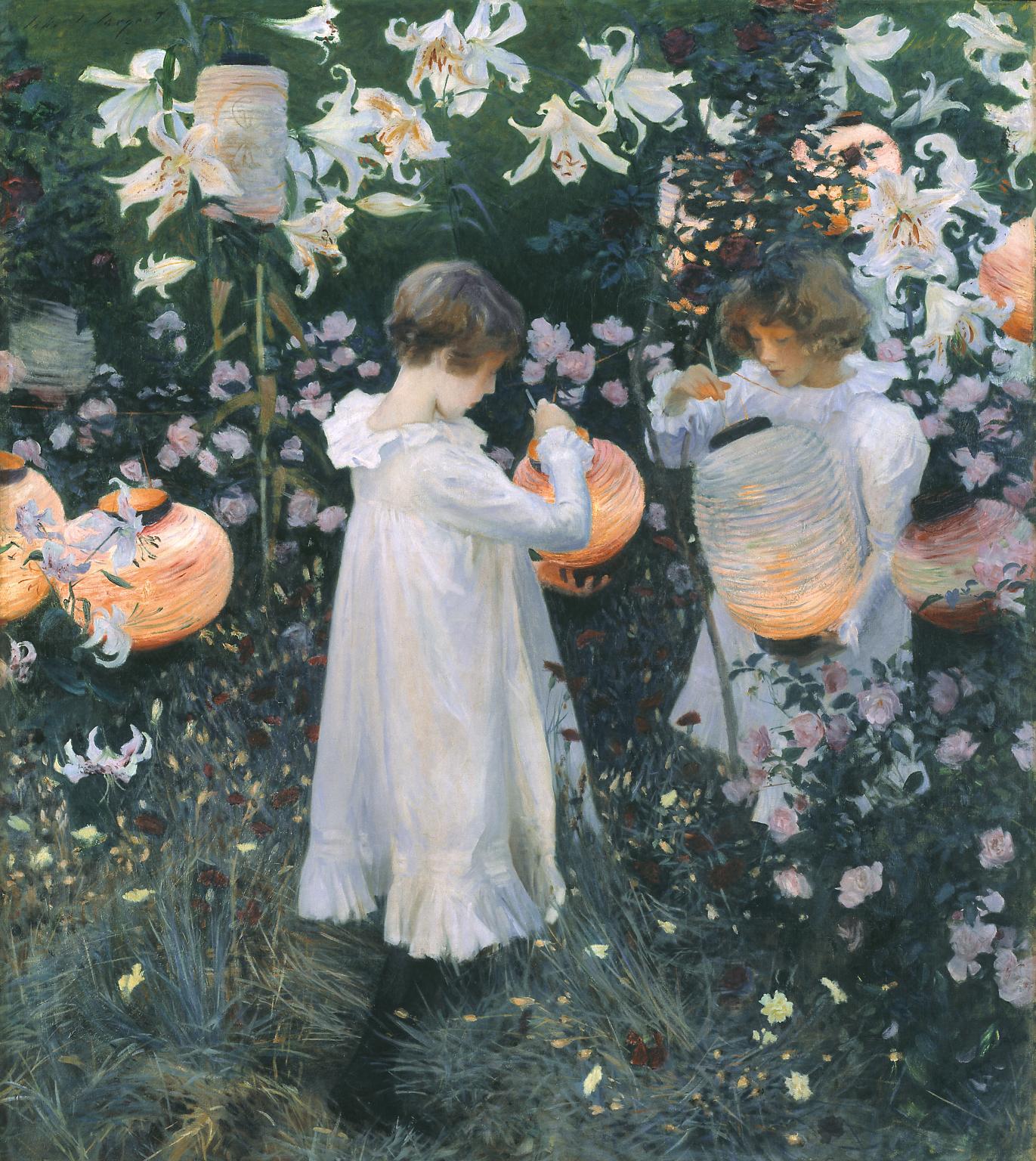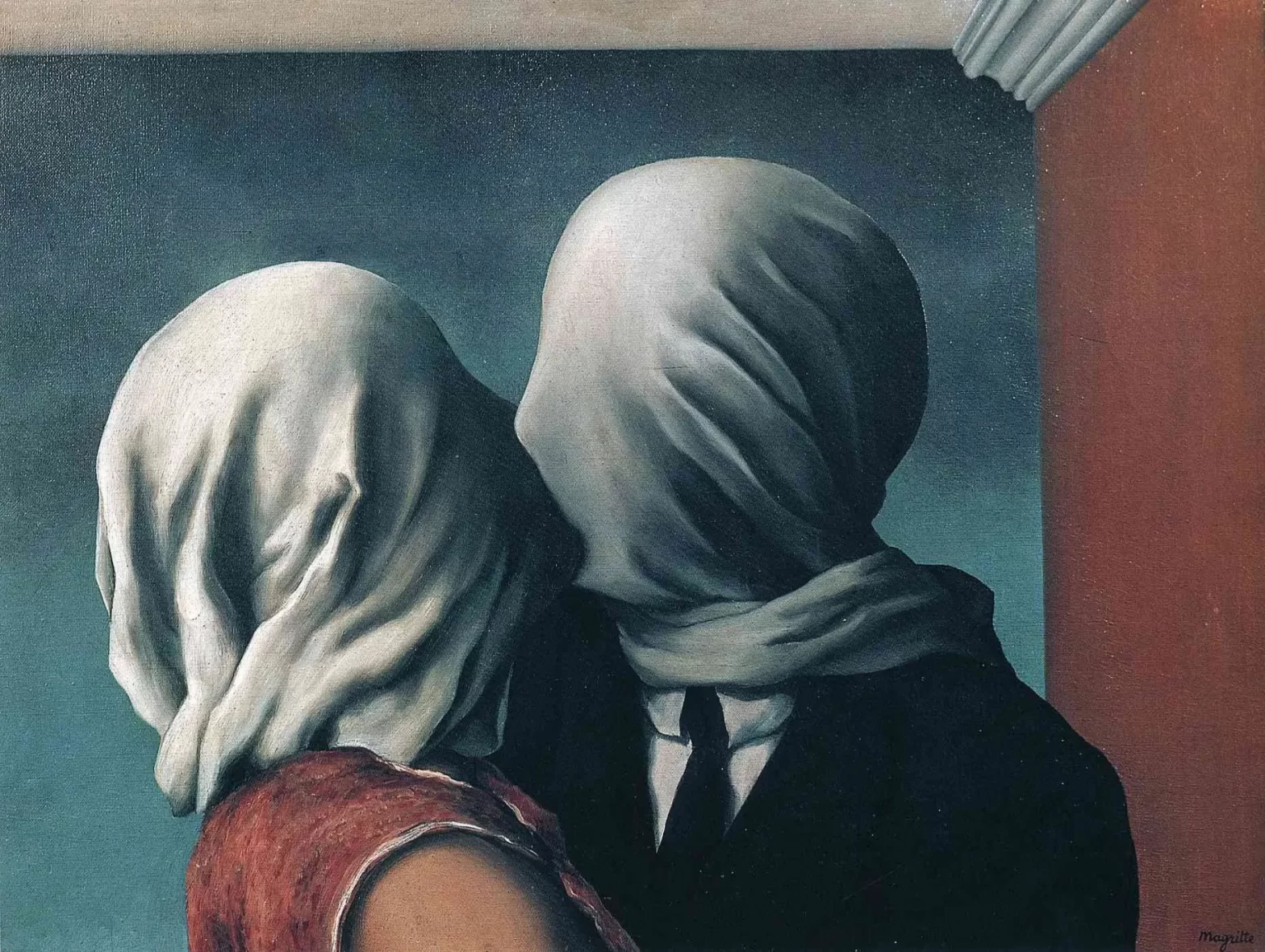The story behind John Singer Sargent’s artwork Carnation, Lily, Lily, Rose (1885-1886) is an oil on canvas painting by American artist John Singer Sargent. The painting depicts two small children dressed in a vintage white long dress who are lighting lanterns in a garden with pink roses that seems to be spreading all over the place, with accents of yellow carnations and tall white lilies behind them. The main objects are the daughter of the illustrator Frederick Barnard – a dear friend of the artist. On the right side is Dolly Barnard (11 years old), while on the left side is Polly Barnard (7 years old). The inspiration for the unique lighting effect came during Sargent’s trip to River Thames at Pangbourne with his fellow American artist Edwin Austin Abbey in September 1885. He saw lanterns hanging among trees and lilies during the journey while boating. At that moment, he had this urge to capture the precise light level at dusk, so he painted the picture en plein air – a French term for ‘painting outdoors’ perfectly mixed with an impressionist style. He would place his easel and other tools beforehand and pose his models in anticipation of the few moments when he could paint it at a perfect time. From September to November 1885, he painted its artwork in the few minutes when the light began to turn its color – blending in perfectly, catching its delicate shades before the light faded into the evening when the sun started to sets as far to the southwest. The flowers in the garden seem like it has died and been replaced with artificial flowers as summer has turned into autumn; as expected, something would change when the seasons change. He finished this artwork the following summer at Millet’s new home nearby Broadway by the end of October 1886. The painting is dominated by green foliage, with no horizon that, in other words, seems to give a sense of depth. Carnation, Lily, Lily, Rose is set in an English garden at Farnham House on Broadway in the Cotswolds, where Sargent spent the summer with Francis David Millet around 1885, shortly after moving to England from Paris. Carnation, Lily, Lily, Rose was first exhibited in the Royal Academy’s Summer Exhibition in 1887. The painting received a critical reception from its audiences. However, it also received praises and well-deserved recognition from audiences and critics and is known as an “extremely original and daring essay in decoration.” The Royal Academy immediately purchased the painting for the British nation through Chantrey Bequest, a special trust fund established by Sculptor Sir Francis Chantrey in 1875. Royal Academy President Lord Leighton and the other Royal Academicians, including Sir Lawrence Alma-Tadema and William Quiller Orchardson, supported the acquisition. Details Artist: John Singer Sargent Title: Carnation, Lily, Lily, Rose Date: 1885 – 1886 Style: Impressionism Genre: Genre painting Location: Tate Britain, London, UK Dimension: 153.7 cm x 174 cm Oil on canvas The viewers can visit its painting at Tate Britain, London, UK. It has now become one of the gallery’s most loved paintings. Tate ↗ Reference Wikipedia ↗ Wikiart ↗ Reference Royal Academy ↗ Reference
Tag: perspective
René Magritte Les Amant The Lovers 1928
Les AmantsThe LoversRené Magritte Surrealism The Lovers, Surrealist Painting The lovers is one such painting that intrigues and holds so much mystery. It is an example of how simple artwork awakens the most complex meanings, exciting stories, and emotions. This painting was created by one of the most famous French artists, René Magritte, in 1928. It is known that most of his artworks are themed on frustrated desire, yearning for love, and craving for lust. The lovers have four variations (take a look at the paintings down below). However, the two of them are pretty well-known by viewers worldwide. One of them is painted in a close-up scene of two lovers, locked in a tight embrace, transfiguring an act of passion and intimacy into one of isolation and frustration, a frustrated desire – with faces covered in cloth. Enveloped faces were known for Magritte’s motif on his creation. In all series of these paintings, the women are entirely covered in veils which is enough to interpret passion, love, and genuine intimacy. It shows that if this is about two lovers, it can be described as “love is blind’. When two people are in love, they are so deep and passionate about their feelings that they do not notice anyone or anything around. It’s blind, it drives one’s mind crazy, yet it’s beautiful – it’s worth the risk and everything that needs to be sacrificed. Some have interpreted this artwork to depict the inability to fully unveil the essence of relationships and the difficulty of sharing its passionate and intimate moment – even with the people they considered as their close ones. Portrait of René Magritte’s Mother Some also speculated that his trauma, his tragic past, inspired this painting. At the age of 14, Magritte’s mother was committed suicide, and her body was found in the River Sambre. At that time, he witnessed her whole body being fished from the water, with her face wrapped by her wet nightgown. However, he has said it clear in one of his interviews that it has nothing to do with his past – it is simply just a painting that holds so much mystery, just like his other paintings. Another version was voiced out, as it said he was very fond of Fantômas – still, nobody knows the woman’s identity hiding her face under the mask. Les Amants (The Lovers), 1928 The lovers are situated in a room with the back wall, sidewall, and ceiling showing a bit. The color of the back fence is blue-grey with a lighter shade on the bottom half and a darker shade through the top half. The sidewall is brick red which both have darker and lighter shades. The ceiling is colored in white and has a decorative trim along the border of the wall; however, it isn’t fully colored along the perimeter of the blue-grey wall. Both figures have a whitish veil that covers their faces and necks completely. The coverings are tight against the front and top of the head and loose towards the back. The male figure wears a black suit and ties with a solid white shirt that seems to be formal. He embraced the woman who dressed in a red, sleeveless garment with white trim – tanned arms fully exposed. The man looked like he was in a dominant position relative to the woman. These two figure seems to be in an intimate atmosphere as she tilts her head up while he leans down, trying to kiss her hungrily, passionately. The way she slightly tilted her face to the left gives her lover more access to her lips and makes her lover more prominent, and reveals the distinct outline of his nose. However, if to look closer at her body position, she is leaning backward a bit. It is, for sure, provokes a mystery that quite hard to put its real meaning. The elements in this painting are the veils, the room, and the two figures. Many viewers wonder if this is a kiss of denied love or honestly and simply just a lover engaged in a romantic time together – alone. The deathlike cloth keeps the two figures at a distance, but the intimacy is there – it is as if to tell that barriers do not exist when it comes to love. The room is painted in a mysterious yet inviting setting – colored in bold colors with no windows at all. However, the lovers are the primary object; it creates an atmosphere of mystery and conspiracy, making this painting more fascinating and thought-provoking. René Magritte, Surrealist Artist Magritte’s vision in this painting is simple yet quite interesting as it involves a deep feeling, deep meaning. For Magritte himself, he wanted the viewers to have their perspective – translated its painting just by observing the whole details, concluding each meaning. Indeed, he is a genius, brilliant artist that deserves to be remembered as one of the greatest artists of all time. The lovers painting can now be viewed at the Museum of Modern Art (MOMA), New York City, USA. It remains a part of an iconic work of surrealism. Series of The Lovers The Lovers I The Lovers II The Lovers III, Private collection The Lovers IV, Private collection TRENDING TODAY Quiet Partings The Old Guitarist by Picasso: Understanding The Artistic Genius Behind the Canvas Fading Petals: Soft Departure Art Appreciation: ‘The Tortoise Trainer’ by Osman Hamdi Bey Love within yourself see my other page The Old Guitarist by Picasso: Understanding The Artistic Genius Behind the Canvas Read More Art Appreciation: ‘The Tortoise Trainer’ by Osman Hamdi Bey Read More A brief history of John Singer Sargent’s “Carnation, Lily, Lily, Rose” Read More Voltage by Dorothea Tanning Read More Load More Stay Connected. Instagram Pinterest

